Here is the Volume 5 of American Football from When you watch something, visit us first! Mr. Yorihisa SEKIGUCHI, former Head Coach of the “ThreeNailsCrowns “, the American Football team of J.F.Oberlin University told us about the plays of Special Team of American Football. This is the complete version of Part 5-1, 5-2 and 5-3 on our YouTube channel.
In the American Football Vol.4, we learned the formations of Defense (DF) and how to defend.
Mr. Yorihisa SEKIGUCHI, former Head Coach of “Three Nails Crowns,” the American Football team of J. F. Oberlin University, told us again about the plays of Special Team.
-1024x576.png)
Part 5-1 Punt
Basic knowledge of Punt
If Offense (OF) notices to get 1st Down would be difficult after their 3rd Down Offense, OF will choose a play of Punt to recover the Field Position.
This is an orthodox “Pro Punt” formation, with a Punter (P) in it.
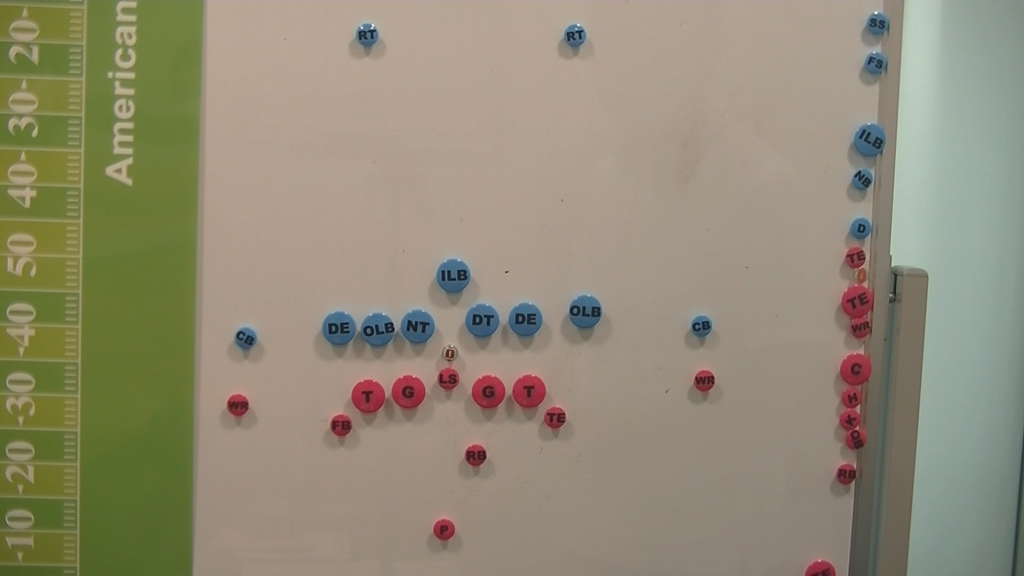
In NFL, there are players called “Long Snappers (LS)” who specialize in supplying long Snaps, and they are in this. LS will send P, who is located 14-15 yards back from Line of Scrimmage, the ball out as quick as possible and P will kick it as far as possible.
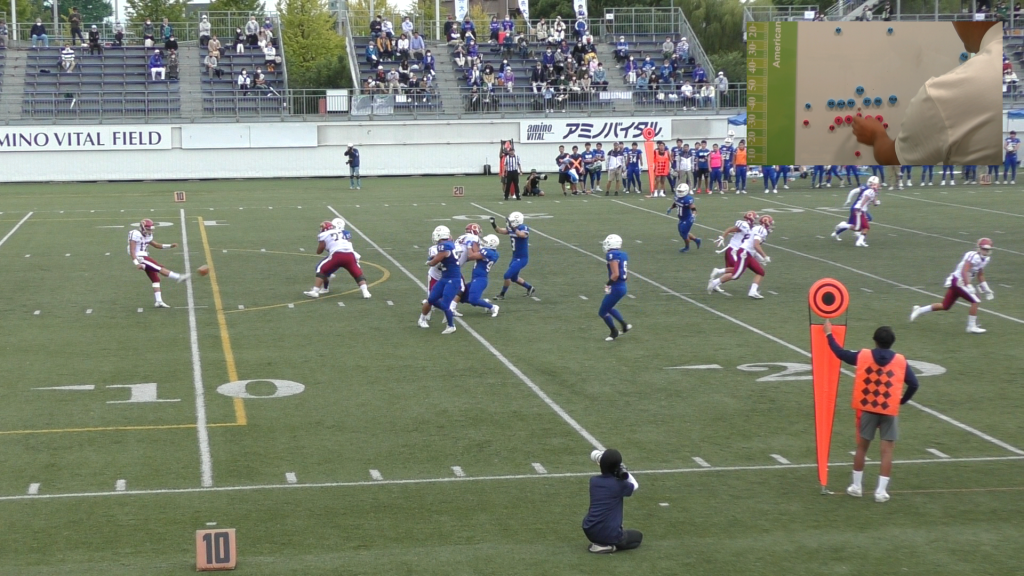
It is considered as a “good Punt” if it flies about 40 yards or more from Line of Scrimmage.
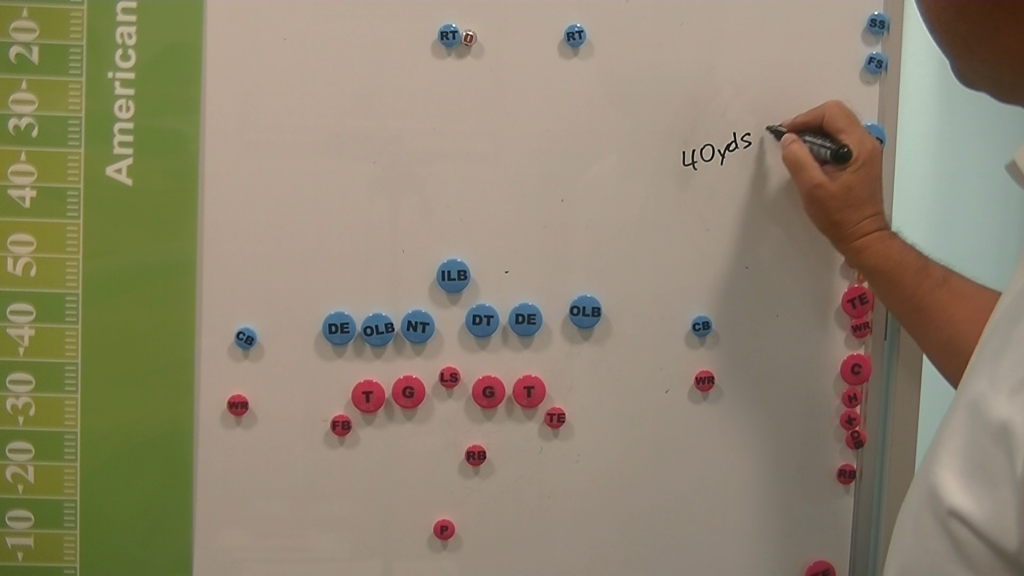
In the case of Punt, OF has waived their right to offense when P kicks. Therefore, no matter how far the ball advances, OF cannot get 1st down any longer. Returner (RT) who catches the ball can return until being tackled.
How Cover Team defends Return
When kicking a Punt, it is previously shared how many yards away and about where of the Field P will kick the ball to among the Punt team. Although indicated as WR, there is a player called “Gunner” here who specializes in tackling RT. If P intends to kick to such digit called “Number” which is 40 yards away on the right, these Gunners are to cover both sides of the RT first.
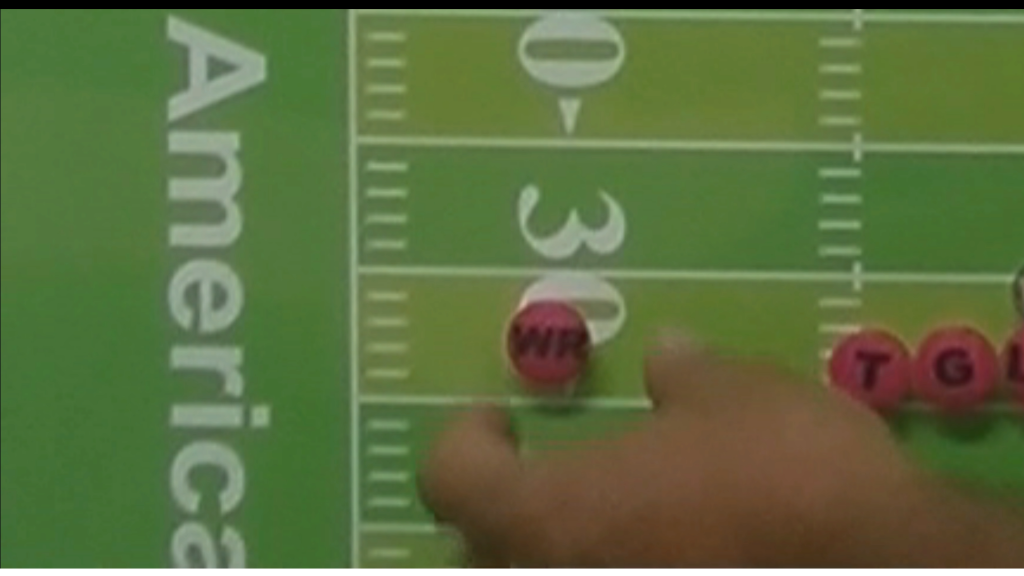
And, since DF is not allowed to block LS for safety reasons, these 3 players to surround RT first and then all Punt Team to try to tackle RT is the preassigned roles.
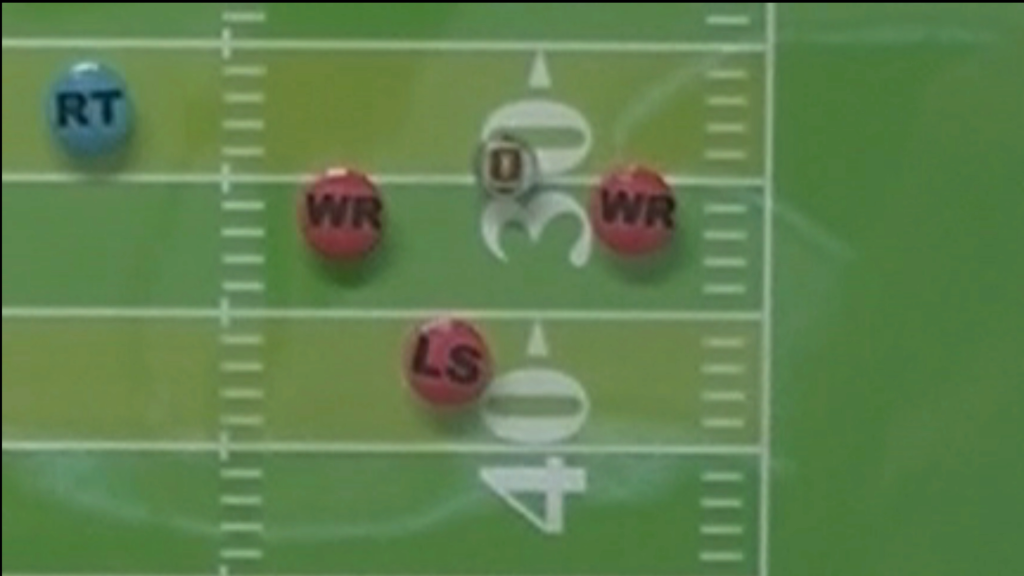
Sometimes if P kicks to a different place than planned, these covering players have to go to RT from a different place, which takes time and results in a “Big Return.”
Each team has a various way of covering, but the orthodox approach, as I just mentioned, is for Gunners to contain both sides of RT and for LS to block the front, so that some player of the team can tackle RT while slowing him down.
Q: Are every player’s roles predetermined?
Yes, they are.
The roles are pre-determined, such as Gunner holds both sides, LS holds the front, and if RT breaks away from there, G player would tackle him, or T player would tackle him, and so on.
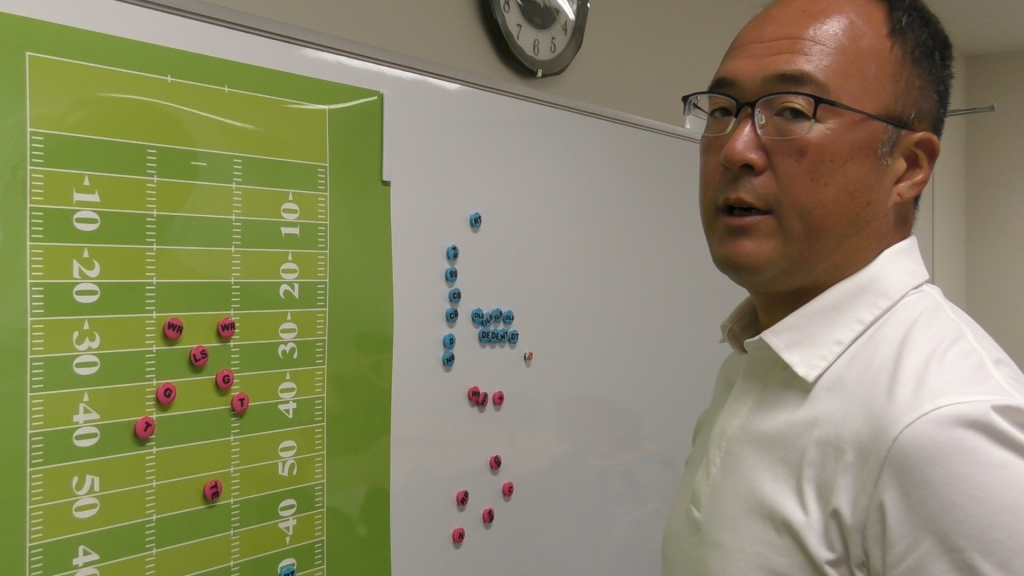
Target point of Punt
From Cover team’s point of view, it is easier to cover a Punt which kicked to the side.
The reason is that the return to this side toward this sideline is not so dangerous if Punt is to be dropped here. So this wide side should be properly addressed.
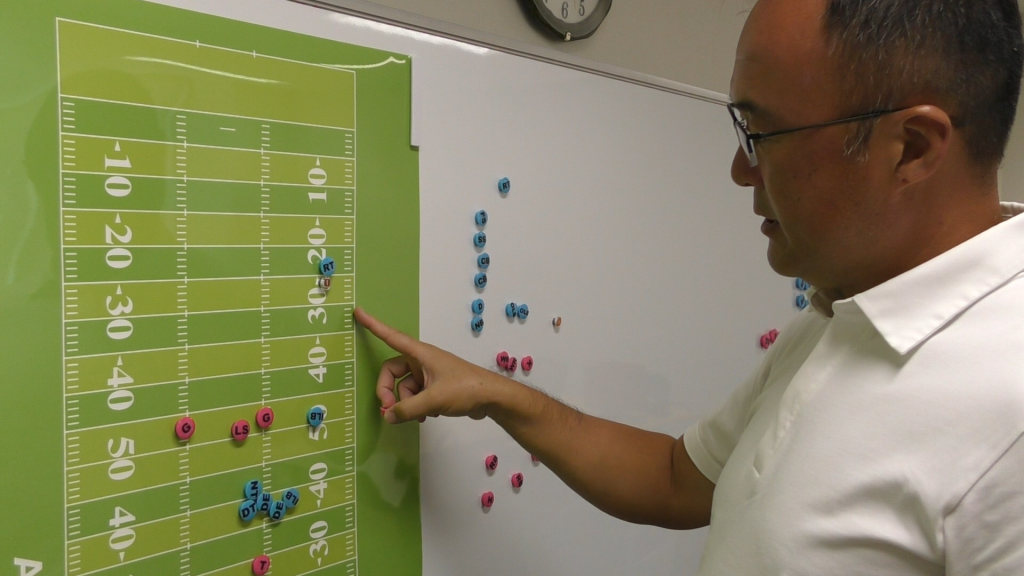
It can also be done to drive RT from the wide side to the narrow side and tackle him, so it is more likely to kick to the side than to the center. It is no problem for Covering (Kicking) team if the ball goes straight outside because the opponent’s Offense will just start from there.
Height of punt
Kicking a very high Punt can give Covering players more time. In the case of a liner Punt, if RT catches the ball before the Covering players reach him, it gives him a chance to return. Therefore, P is required to kick a high Punt so that the ball stays in the air for a long time (known as “Hang Time”), as well as far, and more accurately to the target position. When a Punt is kicked, P is positioned about 15 yards back, but the End zone is only 10 yards, so whether the ball is behind their own 5 yards or not is one key point.
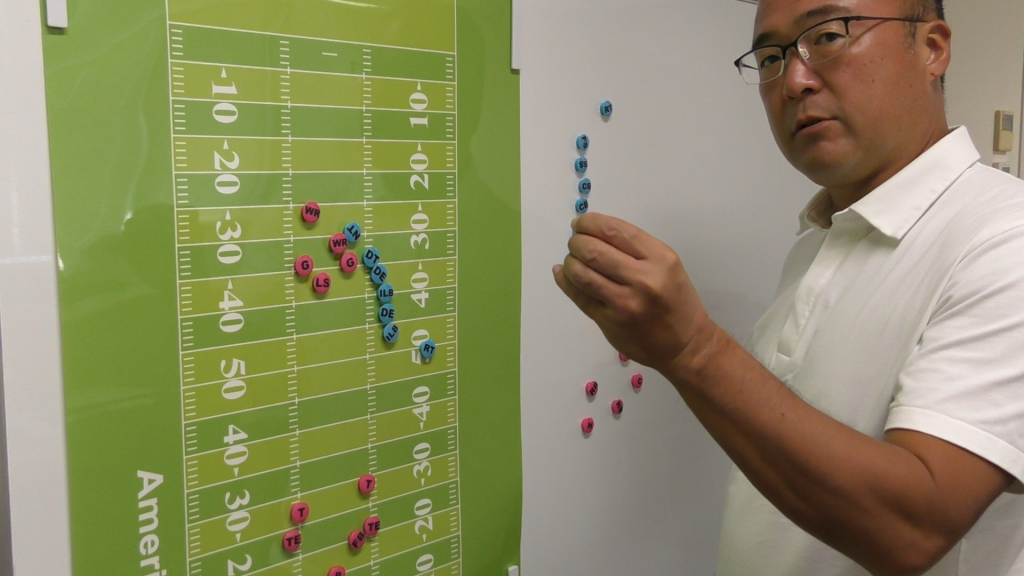
Punt from deep position of their own end
If a Punt is to be kicked from behind their own 5 yards, P wants to kick as quick as possible because he cannot secure enough distance.
If P kicks quickly, the ball will naturally reach RT faster and RT may be able to make a Long Return. And if RT returns to this position, they can kick a Field Goal (FG) even if their Offense will be stopped. Therefore, when a Punt from less than their own 5 yards, P often kicks directly off to the sideline.
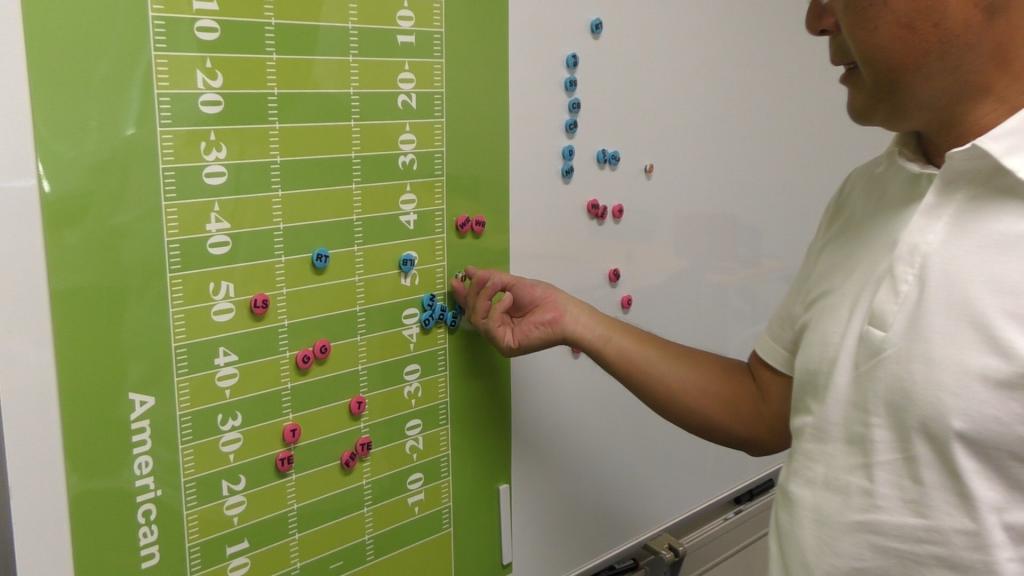
Many teams decide to kick directly outside quickly, even if the distance is short, to avoid “Punt Return Touchdowns” or to avoid starting the Offense from a very advantageous position for the opponent.
How Defense (Receiving Team) thinks
Q: Please tell us about how Receiving team thinks.
The most important thing for Receiving team is to secure the ball. If RT fumbles here, it will directly lead to a Turnover, so it is important to secure the ball anyway. If there are players nearby who are about to tackle RT, “Fair Catch” of avoiding to being tackled by abandoning the return is allowed, and this is also utilized to secure the ball.
There is a potential of “Big Play” on Punt, so in addition to securing the ball, the key is how much Receiving team is targeting for that.
The best thing for the Receiving team is to block the Punt. A quick player comes this way and aim to tackle P while he still has the ball or to block the ball just after P kicks it. A successful Punt Block is considered effective because they can start their Offense from the opponent half or closer position to the End Line.
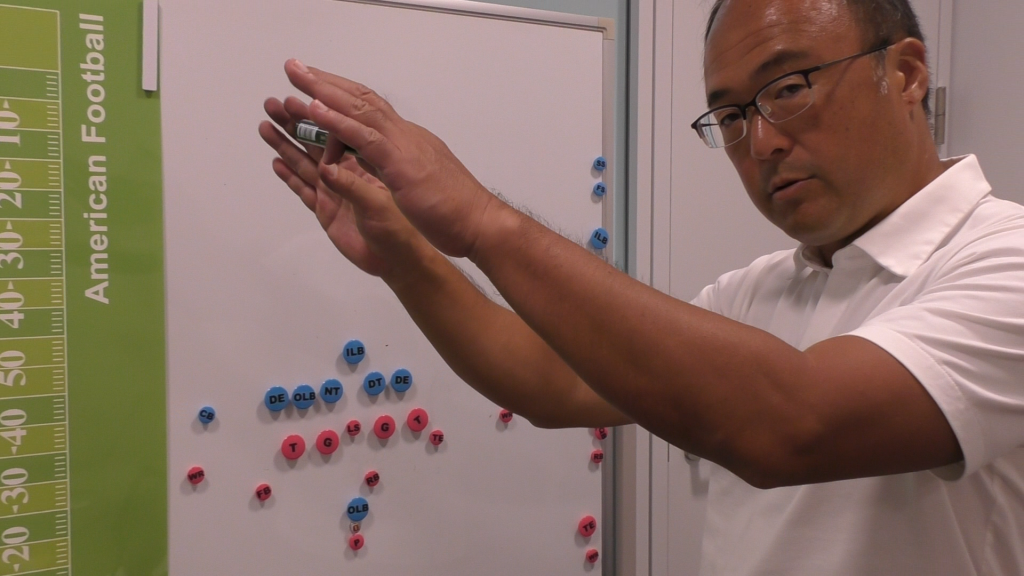
Or, share in advance within the team that when the Punt reaches RT, he will make a return to this side for example. The Kicking team players come to tackle RT like this, so the Receiving team players “build a wall” to make it easier for RT to return. This is another technique for Return.
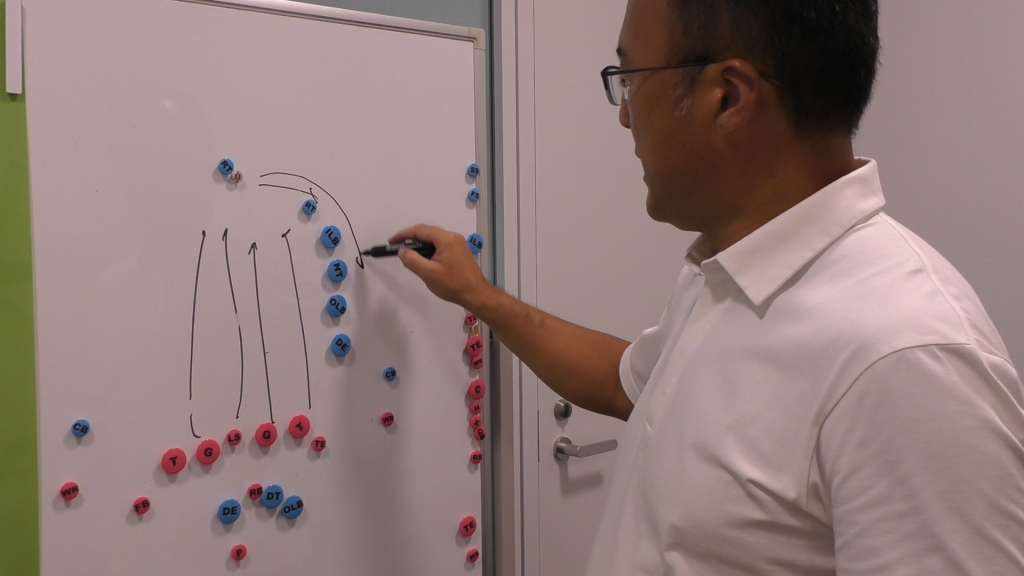
What is interesting to watch is that at times, only 1 player is left and all the rest players go in to Punt Block, and at other times, only 2 players on both side go in and all the rest players become blockers for RT.
What is done depends on the situation, the point differential, how each team thinks about Punt, i.e., whether they choose to return more or to block more, and the characteristics of each team.
Part5-2 Kick Off
Now, let me explain about “Kick Off.” About “Kick Off Cover” and “Kick Off Return.”
In NCAA and in Japan, Kick Off is to be kicked from 35 yard of their own. Kick Off is kicked from 30 yards only in NFL, but commonly from 35 yards. Kicker (K) kicks the ball as far away as possible.
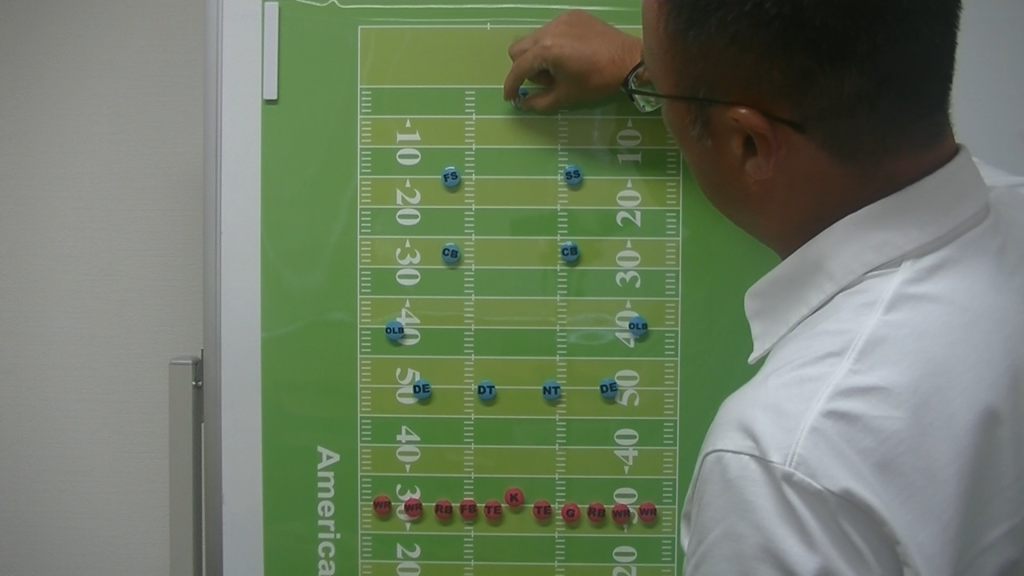
The interesting point of Kick Off is how to block the Covering team players by the Returning team players so that Returner (RT) can run the predetermined returning path. I think Kick Off is very interesting because it is fast, and is which the ball moves the most as is general in Special team’s plays.
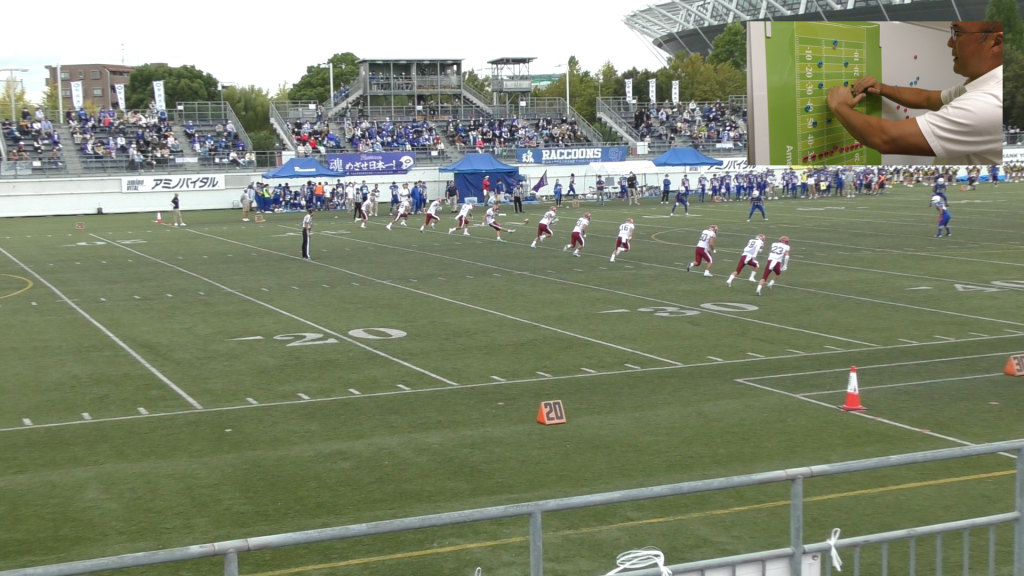
Return routes can be categorized into 2 types: “Center Return,” in which RT runs in the center of the Field, and “Side Return,” in which the players of Return team build “a wall” like this and let RT run on the side.
Q:How do both teams play on Kick Off?
Where to block the opponent players who comes to cover at full speed, whether at 35 or 40 yards of the field, is pre-determined and these players drop down to that point, while the other players block the pre-assigned players and make a runway for RT.
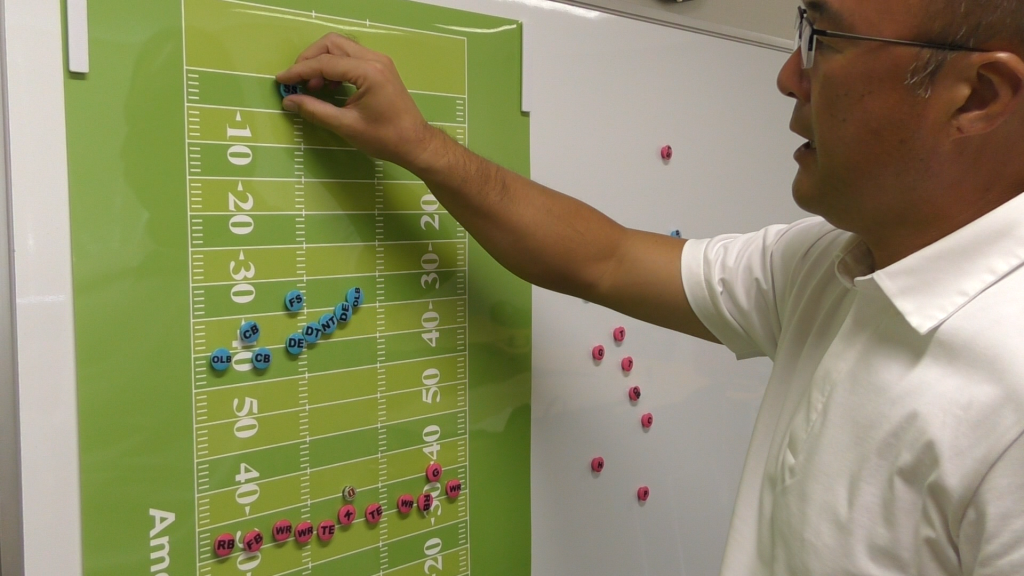
In Return team, the opponents are numbered 1, 2, 3, 4, and 5 on each side, and each player is pre-determined that “I will block the 3,” that “I will block the 4,” that “I will block the player coming through,” etc.
The Cover team, on the other hand, goes to cover, keeping the distance between the players basically, sometimes crossing the first and second players to confuse the Return team, or giving the players various roles.
For example, to give these players of breaking down the wall by firmly ramming, these players of covering both sides of RT, these players are to cover RT when he comes out, these players are waiting as a safety in case RT come out further to avoid TD and so on, according to their pre-assigned roles.
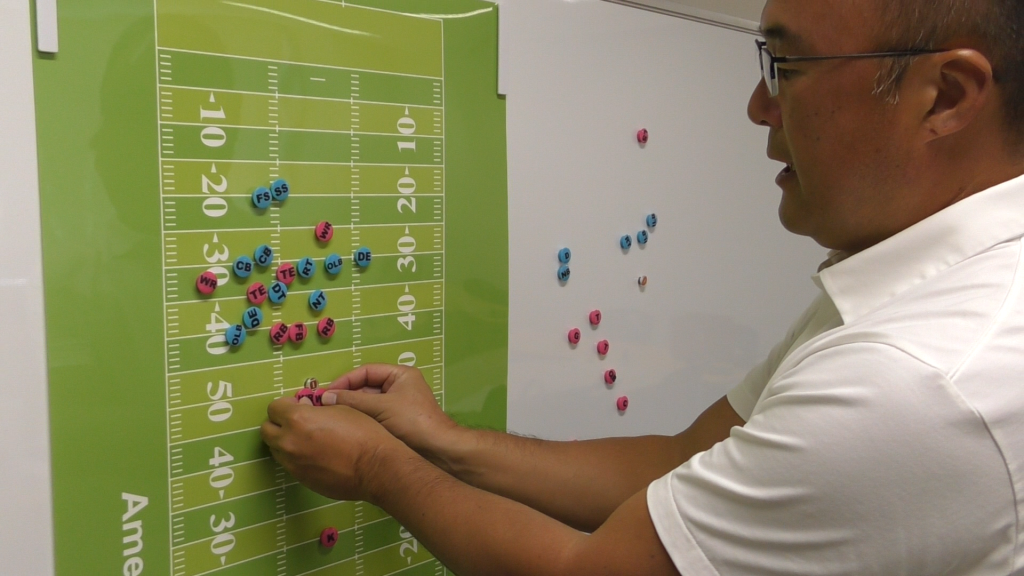
“Success” or “Failure” of Kick Off
If the Kickoff ball goes into the End Zone, called a “Touch Back,” RT may return from there, but in many cases, especially if RT catches the ball at the deep area of the End Zone, he can waive the Return. If the Return is waived, the next Offense will begin at their own 25 yard.
Therefore, from the Covering team, it can be considered that the Cover is successful if they can stop the RT deeper than 25 yards. Conversely, if RT is to return in such cases, the success or failure of the Return will be evaluated by whether they can return more than 25 yards or not.
Onside Kick
For example, the situation is in the 4th Quarter, only 2 minutes remaining, one team is behind by 7 points, and the opponent still has timeouts remaining, and if they simply give the ball to the opponent, time will be consumed and it will be impossible to turn around, so they intend to keep the ball of the Kick Off.
When the ball kicked from 35 yards moves for 10 yards, i.e. exceeds the 45 yards, it becomes a “Free Ball” and can be secured by either team.

Generally, the players in the front row of the Receiving team are often large players because they need to block the opponent’s large players who come to them running fast. Many large players who can run fast are often not good at handling the ball.
The “Onside Kick” is where K rolls the ball of American Football, which shape is oval, at least 10 yards to where such large players are and takes advantage of the irregular motion of the ball to secure it by the fast players of their own team.
Naturally, the Return team will know that the possibility of an Onside Kick will increase as the time remaining decreases, so they will leave RT behind and place the other players up front to defend like this formation.
However, when a relatively weaker team is trying to win, an Onside Kick may be done at an unexpected situation, such as at the start of the match or immediately after the first score, in order to lead the “Momentum” of the match to their team.
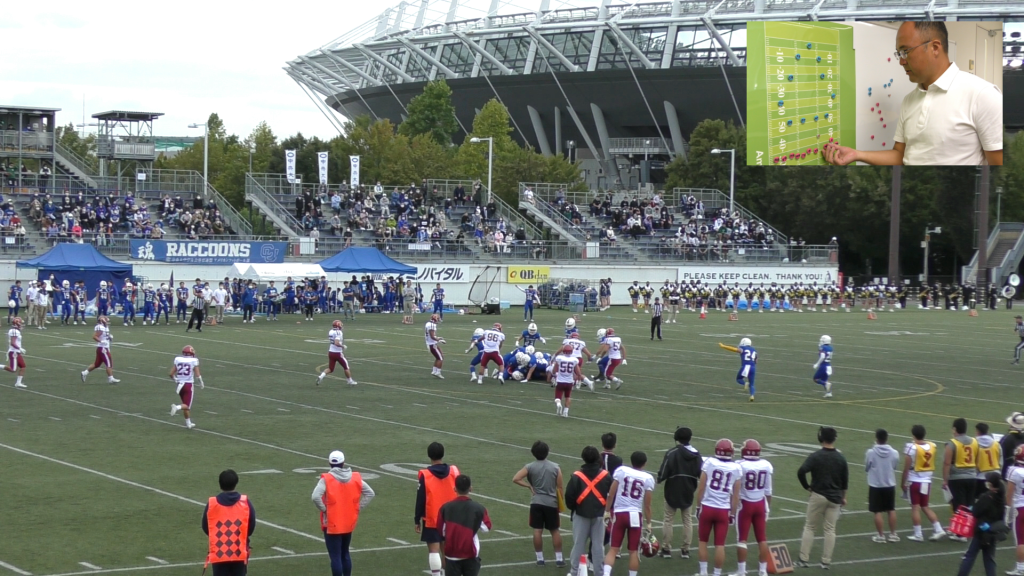
If it is obvious that an Onside Kick will be done, the Return team can easily respond, however, if it is done when it is not expected, because some players are not skilled with the ball as mentioned earlier, so it is often the case that such players fumble the ball or the ball is hit and the Covering team secures it.
Onside Kick is also done when some team wants to close the score at the end of the match, or when they want to surprise their opponent and gain the momentum, and what I mentioned is the overall about the Onside Kick.
Part5-3 Field Goal (FG)
Let me explain about Field Goal (FG) as one of the OF’s offenses.
In FG, if the ball kicked by the Kicker (K) passes between the poles, 1 point is awarded when it is after a Touchdown (TD) or 3 points when it is a normal down play.
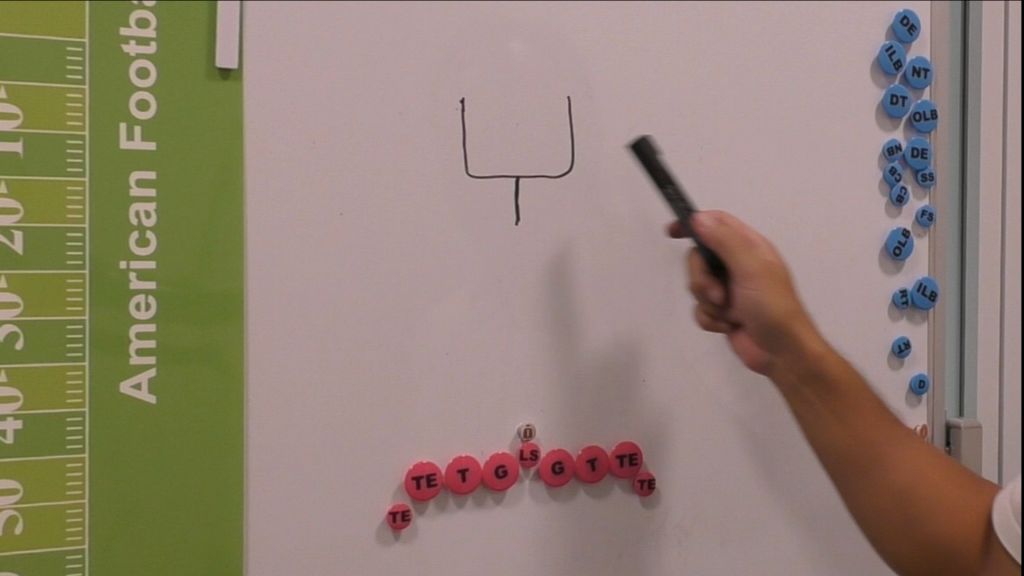
So, if OF is 4th down at 20 to 25 yard of the opponent’s end, they usually go for 3 points by FG instead of kicking a Punt. In FG, Long Snapper (LS) passes the ball to Holder (H) who sets it up accordingly and K kicks it toward between the poles.
The distance from LS to H is about 7 yards, and the standard time from snap to kick is roughly 1.5 seconds or less. Therefore, if they can kick within 1.5 seconds, they have excellent coordination.
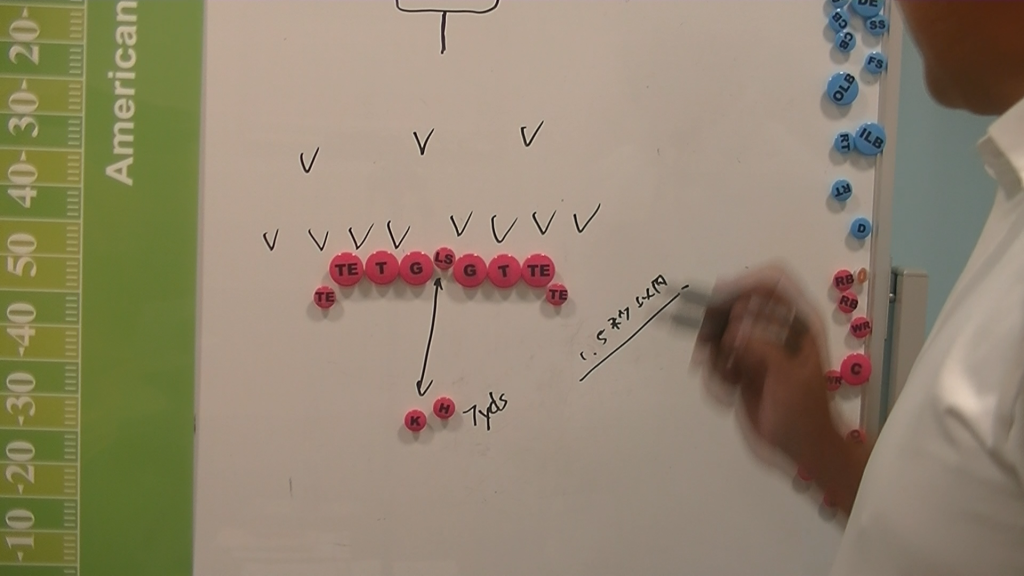
DF players are in such formation and even though some players rush quickly, the ball would not be blocked if K can kick within 1.5 seconds. DF players try to block the ball within 1.5 seconds with both “Hands up” after making the shortest possible rush.
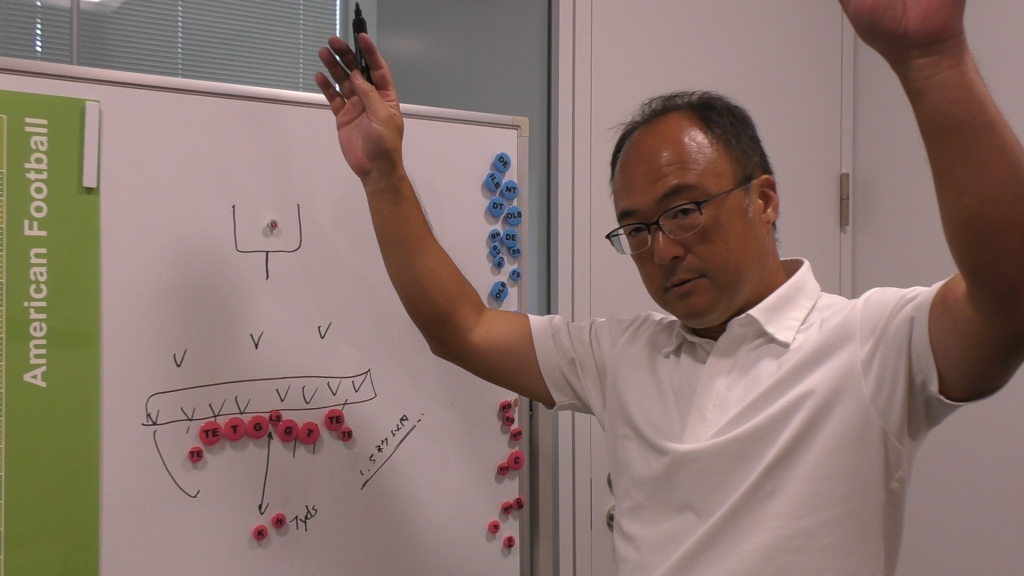
For OF players who guard FG as FG unit, the major mission is how to create such 1.5 seconds I just mentioned, so they are lining up big players in the front line anyway. Please notice that in a normal Offense, there is about 2 yards between Offensive Line (OL) players (called Gap), but in the case of FG, there is none at all. The players are so close together that the outside leg of Guard (G) crosses the inside leg of Tackle (T). The basic idea is that such players get close to each other, like one thick wall, to create 1.5 seconds for K to kick.
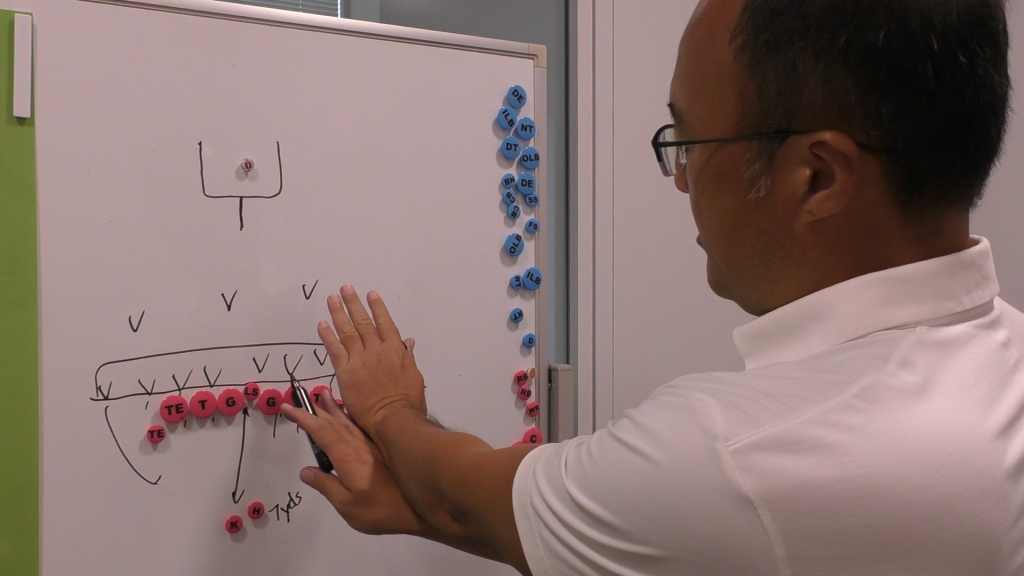
Therefore, DF players rush very fast and powerfully. Then, for example, OF can make a trick play by passing the ball by H to this player who has entered into the Pass course.
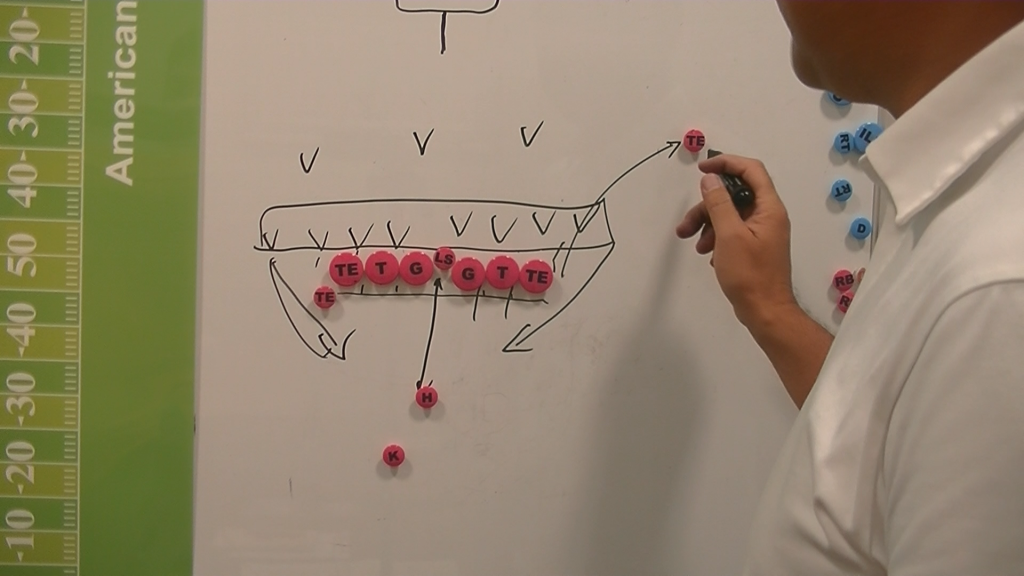
Also, H may carries the ball by himself, therefore, to take care of such plays, DF may place a player here to give him a role of covering OF player who enters into the Pass course or carries the ball.
Over 95% of FG are duly kicked. However, many teams prepare several special plays, for example, throwing a pass to outfox the opponent for about once every 20 to 30 times when the snap is failed or when the rush of DF is too aggressive. If such special play is successful, they gain 1st Down and can continue the Offense.
In special Bowl Games such as Super Bowl, each team, both professionals and students, prepares several such special plays, although whether or not they are used depends on the development of the matches.
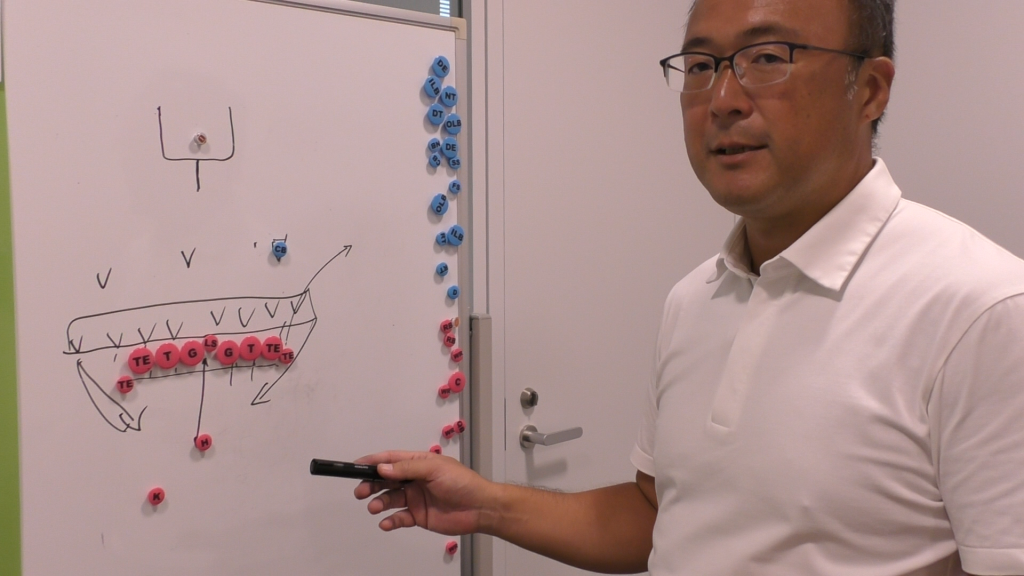
I think FG are fun to watch, because a special play like these is made, OF can gain the momentum of the game at once.
Share this content:
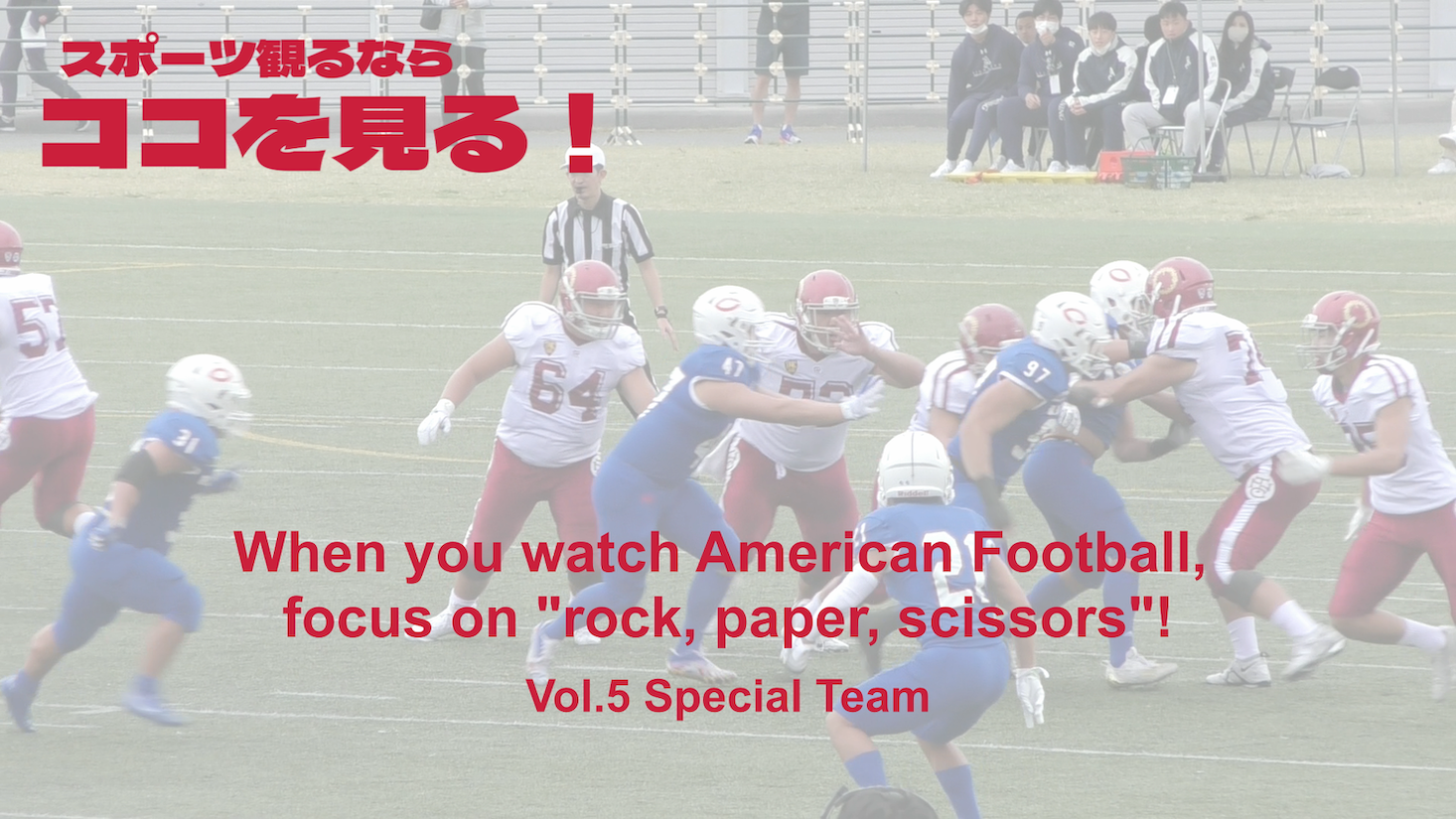
コメントを残す